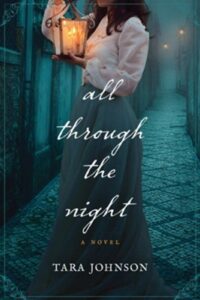By Tara Johnson, @TaraMinistry
Writing is a learned skill. No one is born knowing how to do heart surgery, or wood-working, or plumbing, yet many of us act like writing is different. You get an idea, write it down, and it is released to world acclaim.
I wish it were that easy.
When I became serious about wanting to learn the craft of writing, I was overwhelmed by the sheer amount of material to sort through. POV, external and internal plot, motivation, goals, conflict, protagonists, antagonists, weasel words, dialogue, beats, structure…the list was endless. With every class I took, the more I realized there was more to this writing gig than I could have imagined.
Instead of beating myself up for all the things I didn’t know (we all start where we start), I decided to do two things: read every story I could in my genre, and pick up every book I could find on the craft. I spent three years just absorbing, mimicking, and applying. I vowed with every craft book I read, I would apply just one principle into my current work-in-progress. I never stopped writing. I kept forging ahead, knowing that each manuscript would be better than the last if I did what the experts recommended.
With all that in mind, here is my list of the top ten writing books that aided my personal writing journey. I’ve listed them in order of significance and frequency with how often I reference them.
- GMC: Goals, Motivation, and Conflict by Debra Dixon
No other craft resource has taught me as much about the bare bones of structure as GMC. Dixon uses The Wizard of Oz as the backdrop for understanding how goals, motivation, and conflict create internal and external structure, as well as developing character. This one is the gold standard for easy-to-understand, applicable fiction techniques.
- Story Genius by Lisa Cron
There are a hundred books on story structure, but the one that elevated my writing to the next level is Story Genius. Cron does a masterful job of teaching the often neglected third track of story: the internal conflict of the protagonist. It forms the conflict for everything around it. Fair warning: This resource is not written from a Christian perspective, but the main content works across all boards.
- Write Your Novel from the Middle by James Scott Bell
All of Bell’s craft books are masterful but this one nails the heart of building a story.
- Self-Editing for Fiction Writers by Browne & King
This should be a staple on every writer’s bookshelf. Browne and King explain why many wonderful stories are rejected, and teach writers how to polish their manuscripts to take them from messy draft to polished prose. Chapters include ‘show, don’t tell’, overuse of adverbs, dialogue, beats, and R.U.I.

- The Emotional Wound Thesaurus by Ackerman & Puglisi
With every writing class I’ve taught, I make sure to mention The Emotional Wound Thesaurus. Never has a resource been so helpful in helping develop a character’s backstory. Each chapter of this resource focuses on a specific trauma (growing up in a cult, watching a loved one die, childhood abandonment etc.) and shows what behaviors, physical responses and psychological choices result from the wound.
- The Moral Premise by Stanley D. Williams
Williams is excellent at explaining what your story is really about, and provides the tools needed to cut away the clutter that often overloads our storytelling. On a side note, The Moral Premise is a writer’s best tool for creating book blurbs and taglines.
- Bird by Bird by Anne Lamott
This beautiful classic is great, not only for writers, but all creatives. Lamott teaches through small bites and steps, how to write and manage life. Topics include ‘getting started’, ‘plot’, ‘dialogue’, ‘writer’s groups’, and ‘publication’…and she does it all with her trademark wit and humor.
- The Snowflake Method by Randy Ingermanson
Never has a craft book been so fun to read. The Snowflake Method teaches the power of rewriting, revising, and drilling deeper to take your story from ‘blah’ to unforgettable…and all through the eyes of Goldilocks and the Three Bears.
- Story Trumps Structure by Steven James
Writers will either love this book or hate it. For those who glory in in-depth outlines and intricate planning, James’ technique will be a difficult stretch, yet he makes a powerful case for occasionally throwing out the rule book to create mind-blowing twists in your story.
- Steal like an Artist by Austin Kleon
This succinct read is a creativity booster. Kleon offers sage advice and quirky tweaks to move writers from ‘stuck’ to inspired. Some of the chapters include: ‘write the book you want to read’, ‘be boring’, ‘creativity is subtraction’, and ‘use your hands’.
Pick up one of two of these and try to apply just one technique to your current work in progress. Then do it again and again. Before you know it, you’ll be at the finish line—a completed story in your hands. And I guarantee it will be more powerful than the story you had envisioned.
With her stammering tongue and quiet ways, Cadence Piper has always struggled to be accepted. After the death of her mother, Cadence sets her heart on becoming a nurse, both to erase the stain her brother has left on the family’s honor and to find long-sought approval in the eyes of her father. When Dorothea Dix turns her away due to her young age and pretty face, Cadence finds another way to serve . . . singing to the soldiers in Judiciary Square Hospital. Only one stubborn doctor stands in her way.
Joshua Ivy is an intense man with a compassionate heart for the hurting and downtrodden. The one thing he can’t have is an idealistic woman destroying the plans he’s so carefully laid. When the chaos of war thrusts Cadence into the middle of his clandestine activities, he must decide if the lives at stake, and his own heart, are worth the risk of letting Cadence inside.
Everything changes when Joshua and Cadence unearth the workings of a secret society so vile, the course of their lives, and the war, could be altered forever. If they fight an enemy they cannot see, will the One who sees all show them the way in the darkest night?
Tara Johnson is an author and speaker, and loves to write stories that help people break free from the lies they believe about themselves. Tara’s debut novel Engraved on the Heart (Tyndale) earned a starred review from Publishers Weekly, and was a finalist in the Carol and Christy awards. In addition to being published in a variety of digital and print magazines, she has been a featured guest on Voice of Truth radio, Enduring Word radio, television and podcasts. She is a history nerd, especially the Civil War, and adores making people laugh. She, her husband, and children live in Arkansas.




Comments 1
Thanks for this great list, Tara. I’ve read nine of the ten and keep them at arm’s reach for quick reference. The only one I have not read is number ten. Craft books have made a great difference in my development as a novelist. Thanks for sharing.